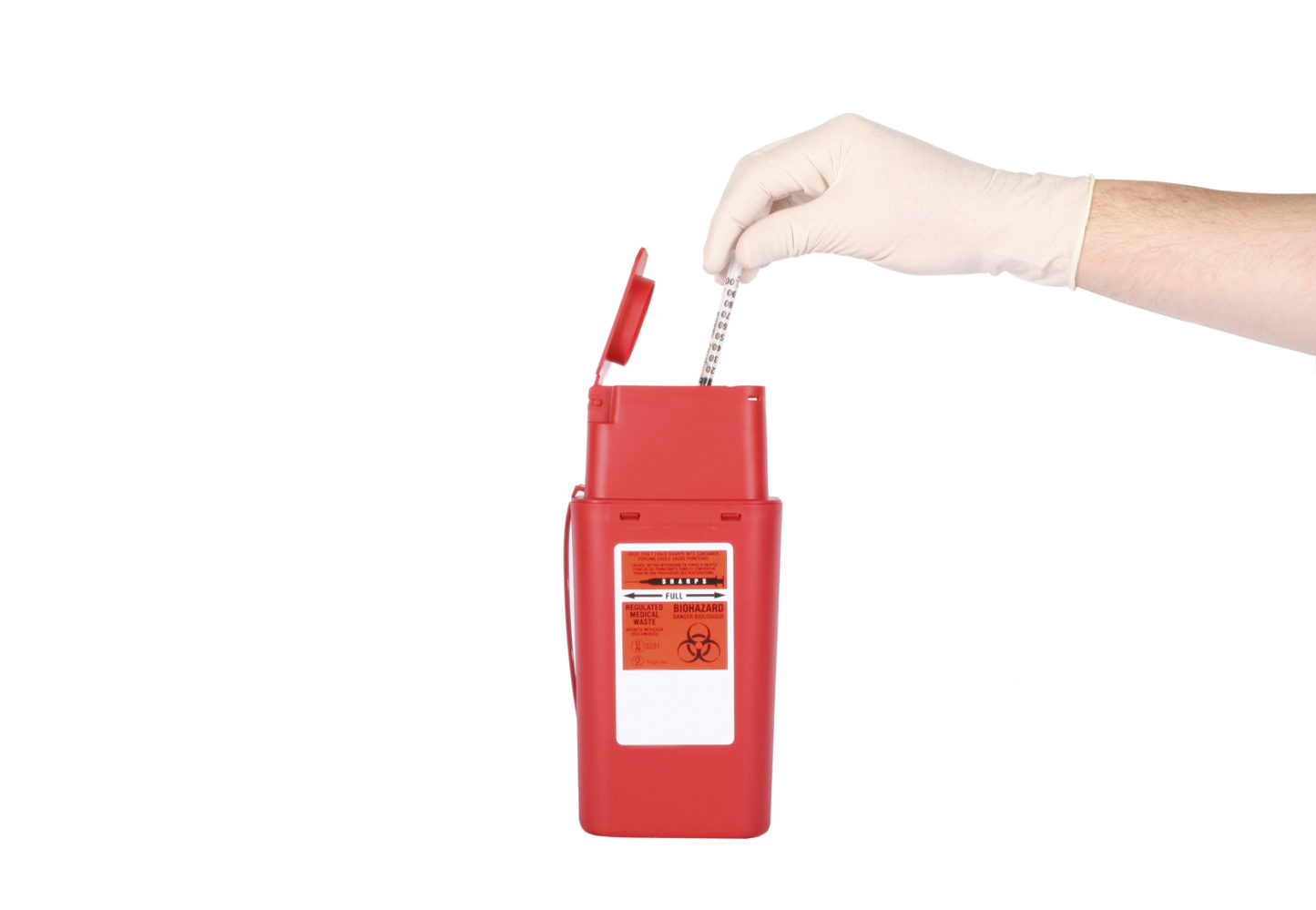What to Consider Before Buying Sharps Disposal Containers

Choosing the right sharps disposal containers makes it easier to properly dispose of used sharps, so it is important to select them carefully. Sharps waste can cause punctures, cuts and laceration injuries on contact. It may also contain body fluids that can transmit pathogens that cause HIV, hepatitis and other blood-borne diseases. Sharps present a danger to employees who process waste, which is why great care is taken to contain them. And the only safe method of containing them? Sharps waste disposal containers. These containers also allow waste disposal companies to haul and collect sharps waste properly. Some companies, like Arizona-based medical waste disposal company US Bio-Clean, offer disposable sharps containers and training on how to use them.
Ask yourself these six questions when shopping for sharps disposal containers.
1. Is it compliant with FDA regulations?
The most important requirement: Choose containers that comply with FDA regulations. The FDA has simple rules for sharps disposal containers. They must be made of clear, rigid plastic; have tight-fitting lids; be stable and leak-resistant during use; and display proper warning labels. Choosing compliant containers keeps people safe and helps avoid health violations.
2. Is it the right size?
Choose sharps waste containers that can accommodate the level of waste output in your workplace. Sharps waste containers are designed for single-use only. That means using overly small containers can lead to the need to buy more containers, which increases your costs.
Hospitals and medical clinics produce large quantities of sharps waste, and therefore need large containers. Smaller containers may be enough for homes and businesses that generate small quantities of sharps waste. You may also choose portable models, which work well for travelling and medical outreach programs.
3. How durable is it?
You want a sharps disposal container that is sturdy and resistant to puncture throughout its life (for obvious reasons). Some are made of types of plastic that become soft at certain temperatures. Other types of plastic can become hard and brittle during hot weather, and can break when dropped.
Only use sharps waste containers made from tough, leak-proof material so fluids will not seep out and contaminate the workplace or environment.
4. Will it allow me to clearly see the contents of the container?
Once sharps disposal containers are filled to the “full line” they must be closed and disposed of. They are not designed to be filled to the top. Overfilled containers can result in punctures to workers. Avoid this by selecting sharps waste containers that allow staff to see the contents accurately. Some models have a narrow translucent strip, while others are made entirely of clear plastic.
5. Does it have an effective closure mechanism?
Sharps disposal containers must have a means of permanent closure. This protects workers by preventing waste from being released during handling, hauling and transport. Only select containers that have secure, permanent and strong closure mechanisms.
6. Is it easy to use?
It pays to select a user-friendly sharps disposal container. Make sure it is also highly visible in the workplace as employees are more likely to use it if it is conspicuous. Mounting options, such as brackets, can be used to secure the container, providing additional safety.
In addition, make sure you choose a sharps disposal container that is compatible with safety engineering in your workplace. For example, select a tall waste container to accommodate long sharps, or pick a model with an opening for broken or disposed glassware if that is a common waste type in your workplace. Wheeled models are also available for added mobility, which are useful in large institutions.